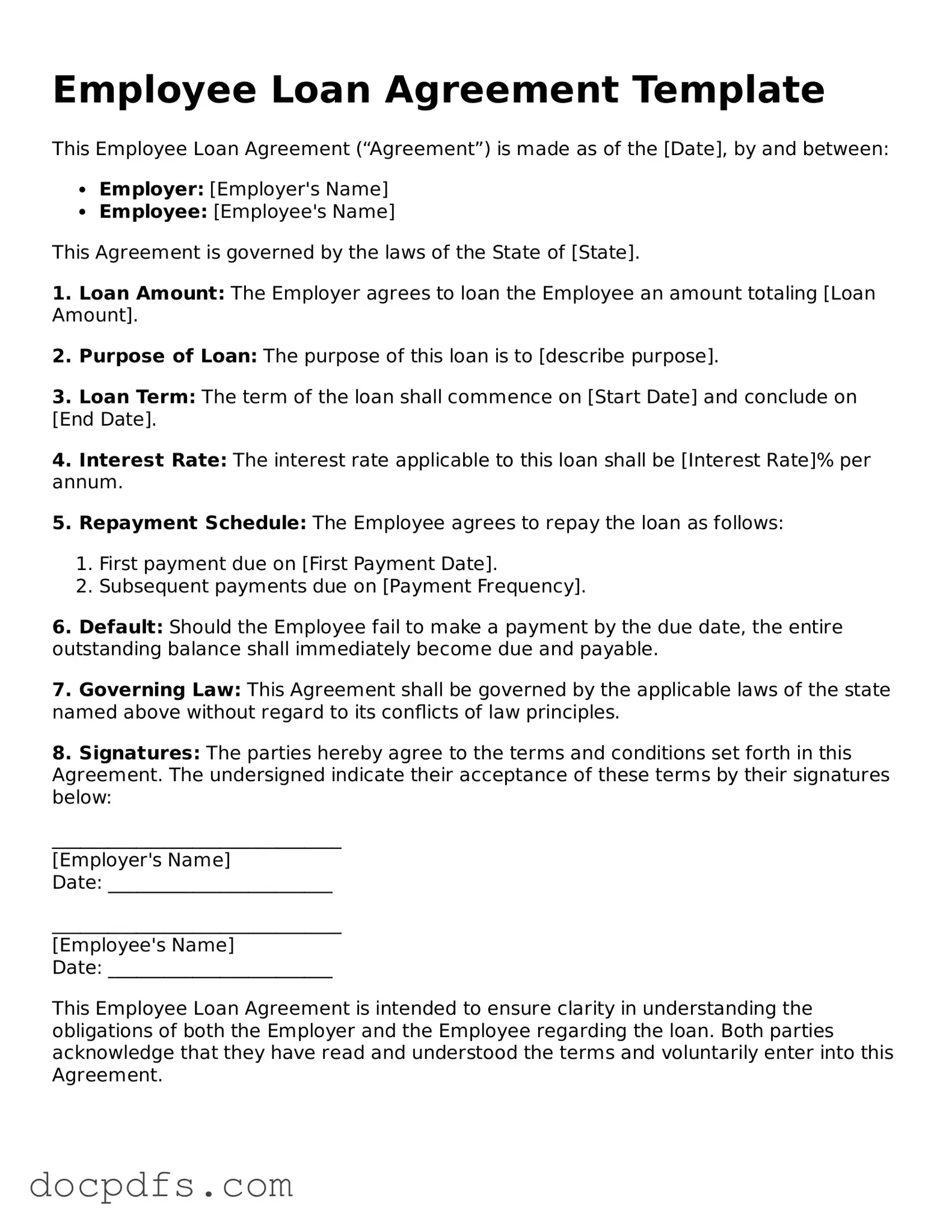An Employee Loan Agreement form serves as a vital document in the employer-employee relationship, particularly when financial assistance is extended from the employer to the employee. This form outlines the specific terms and conditions of the loan, ensuring that both parties understand their rights and obligations. Key elements typically included are the loan amount, interest rate, repayment schedule, and any applicable fees. Additionally, the agreement may specify the consequences of defaulting on the loan, providing clarity on what happens if the employee fails to make payments as agreed. By detailing these aspects, the form aims to protect both the employer’s financial interests and the employee’s ability to repay the loan without undue hardship. Furthermore, the Employee Loan Agreement can also address the possibility of wage deductions for repayment, thus offering a structured approach to managing the loan. Overall, this form is essential for maintaining transparency and fostering trust between employers and employees during financial transactions.
